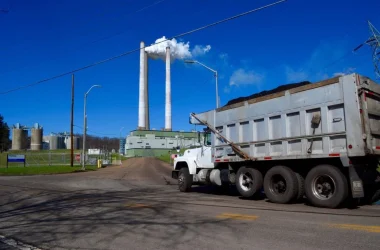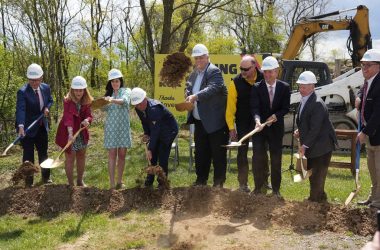The Herald-Dispatch of Huntington
HUNTINGTON, W.Va — Controlling the damage caused by the region’s opioid epidemic would take an estimated $166 million in additional investments toward substance use treatment as well as economic redevelopment in the Huntington-Ashland metropolitan area, research by the Marshall University Joan C. Edwards School of Medicine indicates.
Of that total cost, $50 million would be required in Cabell County alone, researchers said.
Considering an estimated 14 percent of the population abuses some type of substance, the overall economic burden translates to around 34 percent of personal income earned in the metro area. The national cost per person — regardless of whether they use drugs — equates to around $40,000 per person. About half of that cost is simply from loss of economic productivity due to death or addicted individuals leaving the workforce, often attempting unsuccessful returns with criminal records.
By contrast, just 4 percent of the individual cost is dedicated to substance use treatment, while 33 percent of the cost can be attributed to health care services and 10 percent to criminal justice.
“What that tells you is that we need to expand our substance use treatment in a big way, but we have to address the economic realities of the area at the same time,” said Todd Davies, director for research development and translation at Marshall’s School of Medicine. “The economic recovery of these individuals and their employability has to be addressed as much as their recovery.”
In monetary terms, Davies said a comprehensive revitalization plan — one that both rehabilitates those addicted and creates meaningful employment — would likely require substantial investments from all available avenues, both public and private. This would require full and solid support not only from state and federal coffers, but also private donations and outside companies willing to invest in the area, he added.
Investing in substance use treatment also carries its own economic advantages in reducing the burden otherwise eventually passed to the health care system — through hospital visits and related diseases — and the criminal justice system. The societal burden of the epidemic is reduced by an estimated $7 for every $1 invested in substance use treatment, said Davies, citing the Substance Abuse and Mental Health Services Administration.
Recovery services generally work in similar fashion regardless of the substance used, he added, and the vast majority of patients would not require inpatient hospital visits. Instead, they could be assigned to often much cheaper medication-assisted treatment, such as methadone, and peer recovery.
The end game — whether or not the Huntington area will recover — is ultimately in its own hands, Davies said, adding that hope is a powerful tool in rallying a massive combined effort moving forward.
“The truth is that if we come together as a community, we can beat it. But if we don’t, we won’t beat it.”
At the national level, community building has become a startlingly tall order given the boiling political and societal climate. To reach those addicted with the fullest, most sincere and effective force possible, Davies said the community — and the nation — must first overcome the mountain of contempt now stacked high before it.
“We need to talk to each other, to relate to each other, practice kindness and move past the contempt,” he said.
Should it choose to move forward, he continued, Huntington has a chance to recast itself as a model for recovering an entire community, whereas other cities may be turning a blind eye to their own part in the opioid epidemic.
“The thing about this area is that people really seem to care about each other,” Davies said. “We have problems just like everywhere else, but I can tell you that in larger cities in other parts of the world, they don’t come together the way this community does.”
The opioid epidemic has cost the West Virginia economy nearly $1 billion from deaths, lost or underperformed jobs and public resources, according to research by West Virginia University.
The estimate includes $322 million in productivity lost from fatalities, $316 million in productivity lost from addicted people working below peak levels and $320 million tied up in health care, addiction treatment and police, courts, jails and prisons.
The White House Council of Economic Advisers pegs the true cost of the crisis in 2015 at $504 billion nationwide.
The Associated Press contributed to this report. Follow reporter Bishop Nash on Twitter @BishopNash.





